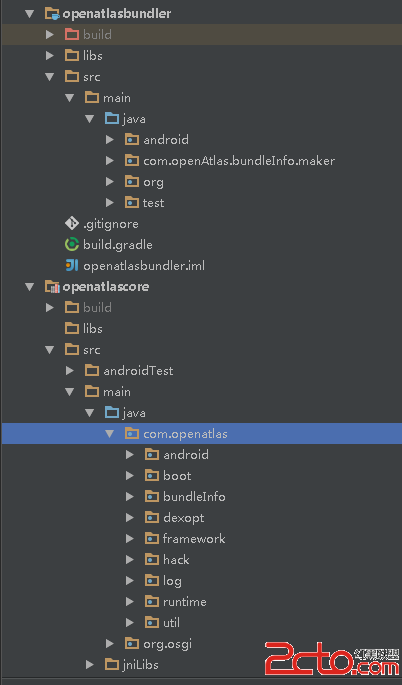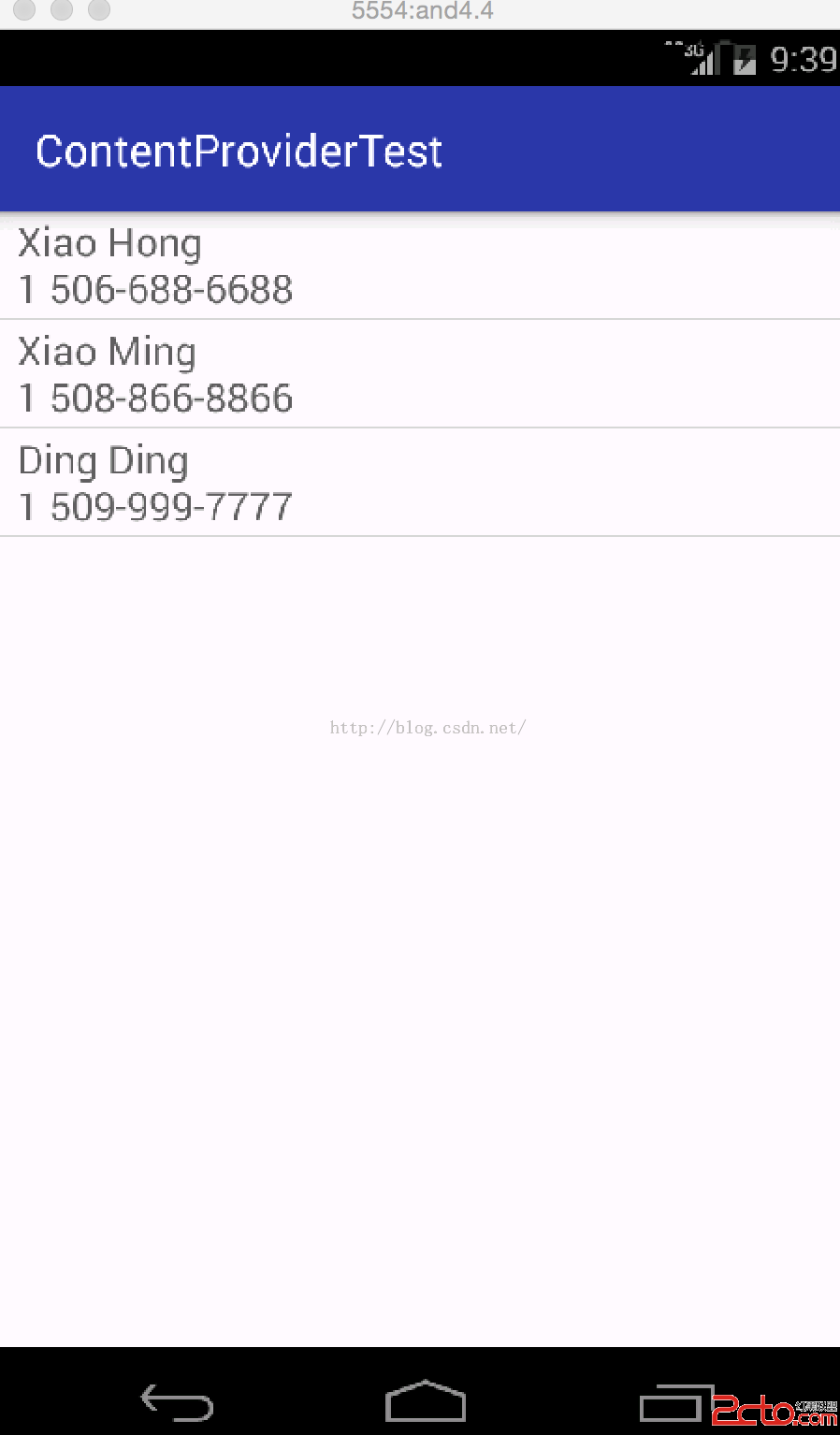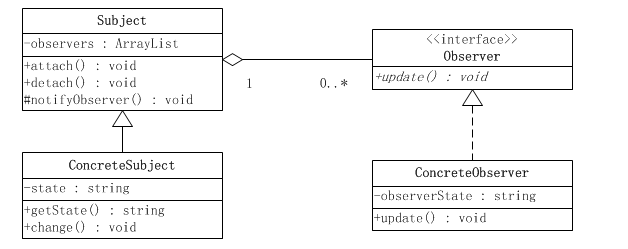編輯:關於Android編程
本文實例講述了Android內容提供者ContentProvider用法。分享給大家供大家參考,具體如下:
PersonContentProvider內容提供者類
package com.ljq.db;
import android.content.ContentProvider;
import android.content.ContentUris;
import android.content.ContentValues;
import android.content.UriMatcher;
import android.database.Cursor;
import android.database.sqlite.SQLiteDatabase;
import android.net.Uri;
import android.text.TextUtils;
/**
* 內容提供者
*
* 作用:統一數據訪問方式,方便外部調用
*
* @author jiqinlin
*
*/
public class PersonContentProvider extends ContentProvider {
// 數據集的MIME類型字符串則應該以vnd.android.cursor.dir/開頭
public static final String PERSONS_TYPE = "vnd.android.cursor.dir/person";
// 單一數據的MIME類型字符串應該以vnd.android.cursor.item/開頭
public static final String PERSONS_ITEM_TYPE = "vnd.android.cursor.item/person";
public static final String AUTHORITY = "com.ljq.provider.personprovider";// 主機名
/* 自定義匹配碼 */
public static final int PERSONS = 1;
/* 自定義匹配碼 */
public static final int PERSON = 2;
public static final Uri PERSONS_URI = Uri.parse("content://" + AUTHORITY + "/person");
private DBOpenHelper dbOpenHelper = null;
// UriMatcher類用來匹配Uri,使用match()方法匹配路徑時返回匹配碼
private static final UriMatcher uriMatcher;
static {
// 常量UriMatcher.NO_MATCH表示不匹配任何路徑的返回碼
uriMatcher = new UriMatcher(UriMatcher.NO_MATCH);
// 如果match()方法匹配content://com.ljq.provider.personprovider/person路徑,返回匹配碼為PERSONS
uriMatcher.addURI(AUTHORITY, "person", PERSONS);
// 如果match()方法匹配content://com.ljq.provider.personprovider/person/230路徑,返回匹配碼為PERSON
uriMatcher.addURI(AUTHORITY, "person/#", PERSON);
}
@Override
public boolean onCreate() {
dbOpenHelper = new DBOpenHelper(this.getContext());
return true;
}
@Override
public Uri insert(Uri uri, ContentValues values){
SQLiteDatabase db = dbOpenHelper.getWritableDatabase();
long id = 0;
switch (uriMatcher.match(uri)) {
case PERSONS:
id = db.insert("person", "name", values);// 返回的是記錄的行號,主鍵為int,實際上就是主鍵值
return ContentUris.withAppendedId(uri, id);
case PERSON:
id = db.insert("person", "name", values);
String path = uri.toString();
return Uri.parse(path.substring(0, path.lastIndexOf("/"))+id); // 替換掉id
default:
throw new IllegalArgumentException("Unknown URI " + uri);
}
}
@Override
public int delete(Uri uri, String selection, String[] selectionArgs) {
SQLiteDatabase db = dbOpenHelper.getWritableDatabase();
int count = 0;
switch (uriMatcher.match(uri)) {
case PERSONS:
count = db.delete("person", selection, selectionArgs);
break;
case PERSON:
// 下面的方法用於從URI中解析出id,對這樣的路徑content://com.ljq.provider.personprovider/person/10
// 進行解析,返回值為10
long personid = ContentUris.parseId(uri);
String where = "id=" + personid;// 刪除指定id的記錄
where += !TextUtils.isEmpty(selection) ? " and (" + selection + ")" : "";// 把其它條件附加上
count = db.delete("person", where, selectionArgs);
break;
default:
throw new IllegalArgumentException("Unknown URI " + uri);
}
db.close();
return count;
}
@Override
public int update(Uri uri, ContentValues values, String selection,
String[] selectionArgs) {
SQLiteDatabase db = dbOpenHelper.getWritableDatabase();
int count = 0;
switch (uriMatcher.match(uri)) {
case PERSONS:
count = db.update("person", values, selection, selectionArgs);
break;
case PERSON:
// 下面的方法用於從URI中解析出id,對這樣的路徑content://com.ljq.provider.personprovider/person/10
// 進行解析,返回值為10
long personid = ContentUris.parseId(uri);
String where = "id=" + personid;// 獲取指定id的記錄
where += !TextUtils.isEmpty(selection) ? " and (" + selection + ")" : "";// 把其它條件附加上
count = db.update("person", values, where, selectionArgs);
break;
default:
throw new IllegalArgumentException("Unknown URI " + uri);
}
db.close();
return count;
}
@Override
public String getType(Uri uri) {
switch (uriMatcher.match(uri)) {
case PERSONS:
return PERSONS_TYPE;
case PERSON:
return PERSONS_ITEM_TYPE;
default:
throw new IllegalArgumentException("Unknown URI " + uri);
}
}
@Override
public Cursor query(Uri uri, String[] projection, String selection,
String[] selectionArgs, String sortOrder) {
SQLiteDatabase db = dbOpenHelper.getReadableDatabase();
switch (uriMatcher.match(uri)) {
case PERSONS:
return db.query("person", projection, selection, selectionArgs, null, null, sortOrder);
case PERSON:
// 下面的方法用於從URI中解析出id,對這樣的路徑content://com.ljq.provider.personprovider/person/10
// 進行解析,返回值為10
long personid = ContentUris.parseId(uri);
String where = "id=" + personid;// 獲取指定id的記錄
where += !TextUtils.isEmpty(selection) ? " and (" + selection + ")" : "";// 把其它條件附加上
return db.query("person", projection, where, selectionArgs, null, null, sortOrder);
default:
throw new IllegalArgumentException("Unknown URI " + uri);
}
}
}
文件清單
<?xml version="1.0" encoding="utf-8"?>
<manifest xmlns:android="http://schemas.android.com/apk/res/android"
package="com.ljq.sql" android:versionCode="1"
android:versionName="1.0">
<application android:icon="@drawable/icon"
android:label="@string/app_name">
<uses-library android:name="android.test.runner" />
<activity android:name=".SqlActivity"
android:label="@string/app_name">
<intent-filter>
<action android:name="android.intent.action.MAIN" />
<category
android:name="android.intent.category.LAUNCHER" />
</intent-filter>
</activity>
<provider android:name="com.ljq.db.PersonContentProvider"
android:authorities="com.ljq.provider.personprovider" />
</application>
<uses-sdk android:minSdkVersion="7" />
<instrumentation
android:name="android.test.InstrumentationTestRunner"
android:targetPackage="com.ljq.sql" android:label="Tests for My App" />
</manifest>
PersonContentProviderTest內容提供者測試類
package com.ljq.test;
import android.content.ContentResolver;
import android.content.ContentValues;
import android.database.Cursor;
import android.net.Uri;
import android.test.AndroidTestCase;
import android.util.Log;
/**
* 外部訪問內容提供者
*
* @author jiqinlin
*
*/
public class PersonContentProviderTest extends AndroidTestCase{
private static final String TAG = "PersonContentProviderTest";
public void testSave() throws Throwable{
ContentResolver contentResolver = this.getContext().getContentResolver();
Uri insertUri = Uri.parse("content://com.ljq.provider.personprovider/person");
ContentValues values = new ContentValues();
values.put("name", "ljq");
values.put("phone", "1350000009");
Uri uri = contentResolver.insert(insertUri, values);
Log.i(TAG, uri.toString());
}
public void testUpdate() throws Throwable{
ContentResolver contentResolver = this.getContext().getContentResolver();
Uri updateUri = Uri.parse("content://com.ljq.provider.personprovider/person/1");
ContentValues values = new ContentValues();
values.put("name", "linjiqin");
contentResolver.update(updateUri, values, null, null);
}
public void testFind() throws Throwable{
ContentResolver contentResolver = this.getContext().getContentResolver();
//Uri uri = Uri.parse("content://com.ljq.provider.personprovider/person");
Uri uri = Uri.parse("content://com.ljq.provider.personprovider/person");
Cursor cursor = contentResolver.query(uri, null, null, null, "id asc");
while(cursor.moveToNext()){
int personid = cursor.getInt(cursor.getColumnIndex("id"));
String name = cursor.getString(cursor.getColumnIndex("name"));
String phone = cursor.getString(cursor.getColumnIndex("phone"));
Log.i(TAG, "personid="+ personid + ",name="+ name+ ",phone="+ phone);
}
cursor.close();
}
public void testDelete() throws Throwable{
ContentResolver contentResolver = this.getContext().getContentResolver();
Uri uri = Uri.parse("content://com.ljq.provider.personprovider/person/1");
contentResolver.delete(uri, null, null);
}
}
更多關於Android相關內容感興趣的讀者可查看本站專題:《Android調試技巧與常見問題解決方法匯總》、《Android開發入門與進階教程》、《Android多媒體操作技巧匯總(音頻,視頻,錄音等)》、《Android基本組件用法總結》、《Android視圖View技巧總結》、《Android布局layout技巧總結》及《Android控件用法總結》
希望本文所述對大家Android程序設計有所幫助。
 Android插件化開發之Atlas初體驗
Android插件化開發之Atlas初體驗
OpenAtlas一款強大的Android非代理動態部署框架,目前已經處於穩定定狀態。 與傳統的代理方式插件不同,OpenAtlas需要對注冊動態部署的組件到manif
 Android自定義ViewPager實現個性化的圖片切換效果
Android自定義ViewPager實現個性化的圖片切換效果
第一次見到ViewPager這個控件,瞬間愛不釋手,做東西的主界面通通ViewPager,以及圖片切換也拋棄了ImageSwitch之類的,開始讓ViewPager來做。
 Android開發學習之路--Content Provider之初體驗
Android開發學習之路--Content Provider之初體驗
天氣說變就變,馬上又變冷了,還好空氣不錯,陽光也不錯,早起上班的車上的人也不多,公司來的同事和昨天一樣一樣的,可能明天會多一些吧,那就再來學習android吧。學了兩個a
 android適配器中的觀察者模式
android適配器中的觀察者模式
1. 模式介紹模式的定義定義對象間一種一對多的依賴關系,使得每當一個對象改變狀態,則所有依賴於它的對象都會得到通知並被自動更新。模式的使用場景關聯行為場景。需要注意的是,